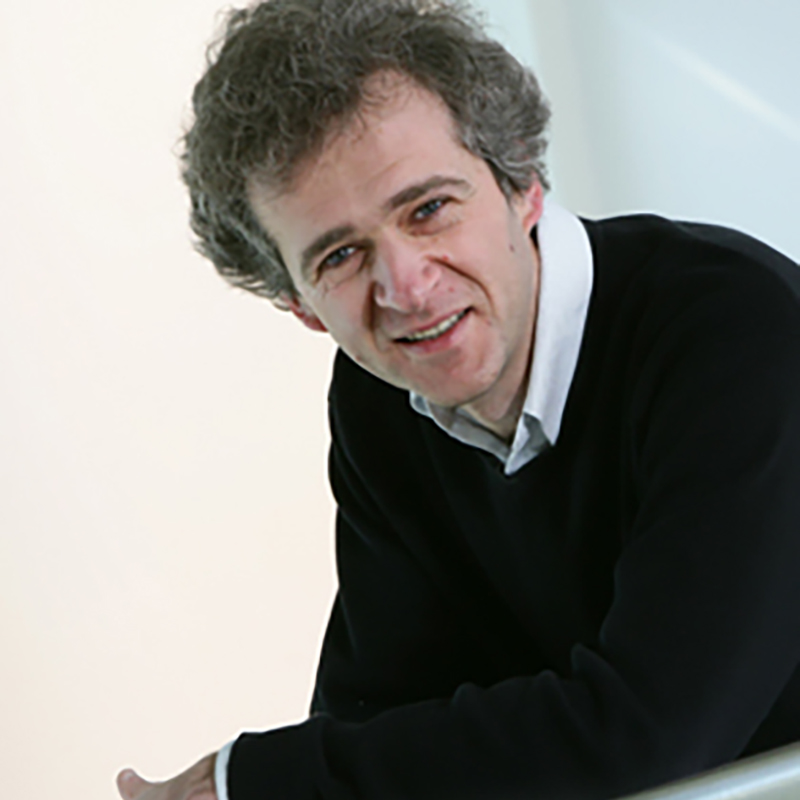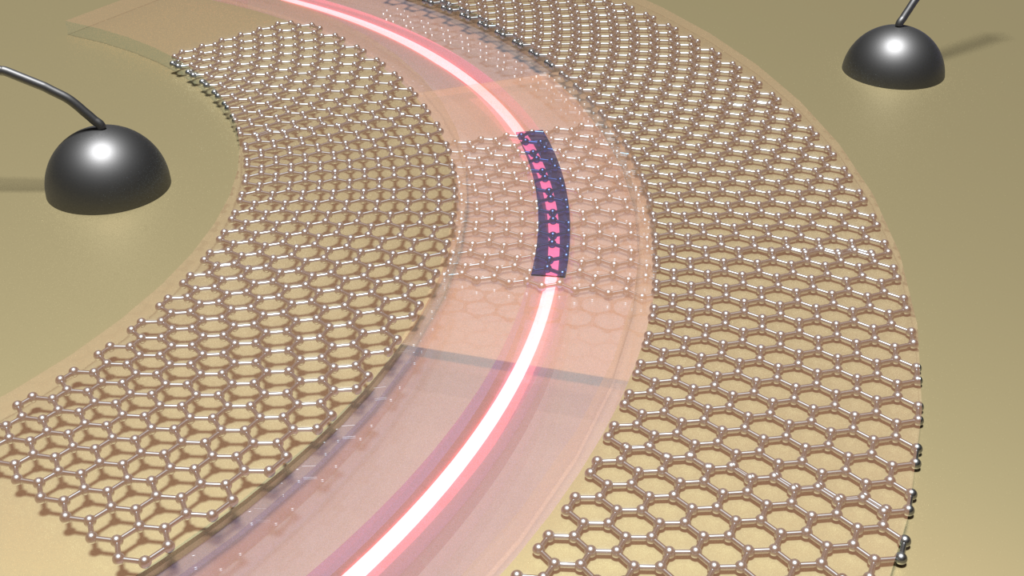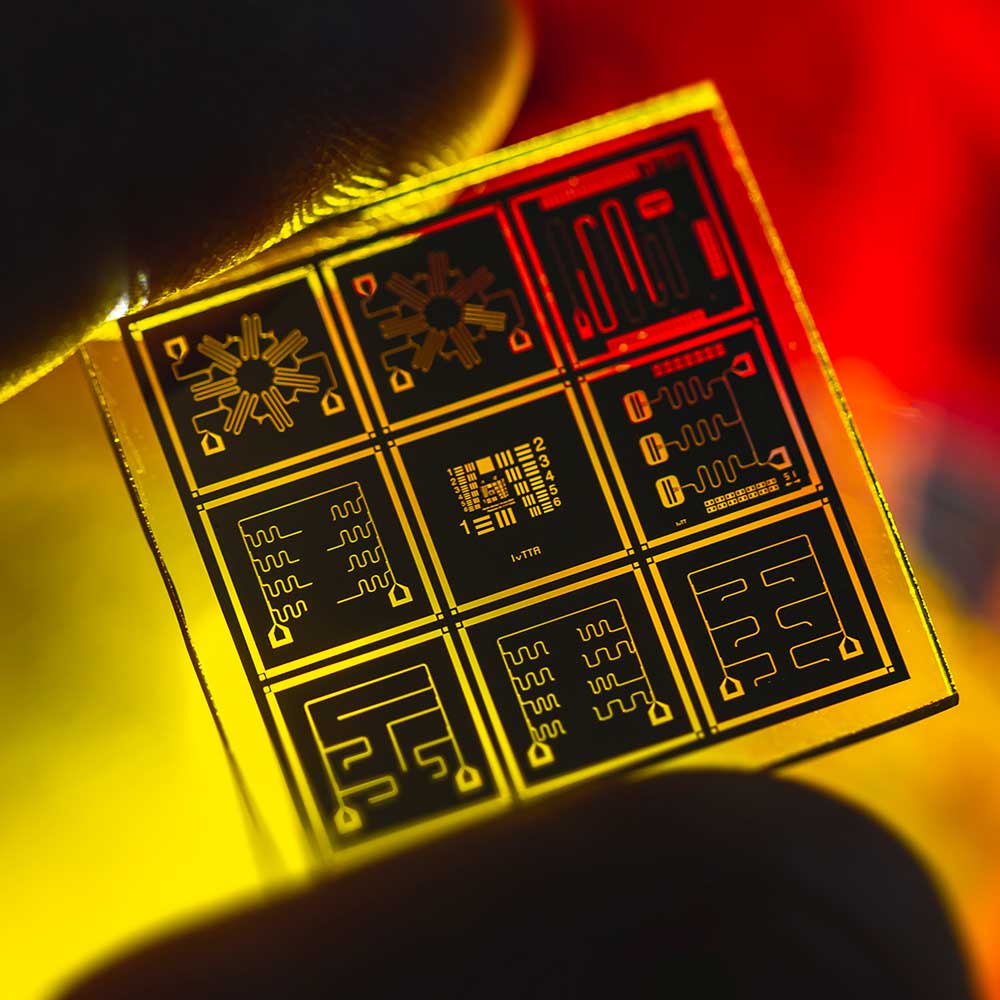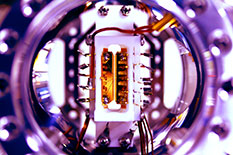News Story
Big Quantum

A robust on-chip photonic transport with potential applications in classical and quantum information processing. Image: E. Edwards/JQI
We are on the verge of a new technological revolution.
In July, the President’s National Science and Technology Council issued a report saying the need for the kind of disruptive innovation quantum research could create should be a national priority.
The University of Maryland is leading that revolution as an established world leader in quantum research, putting the weirdness of quantum physics to work in new advances that offer the potential to disrupt in big ways. Researchers such as Mohammad Hafezi, Joint Quantum Institute (JQI) and Institute for Research in Electronics and Applied Physics (IREAP) fellow and assistant professor in the Department of Electrical and Computer Engineering, capitalize on the strange behavior of quantum systems, which can exist in two different states simultaneously, making new data processing advances that supersede the zeros and ones of binary code possible.
What does this all mean? In short, quantum engineering could change anything that has a computer inside it, which is practically all modern technology. “It can bring a lot of capabilities that we didn’t have in the classical computing world,” Hafezi says, “such as more secure communications, faster computation, and simulations at levels never before possible.”
These colossal advances are being made at the microscopic level. Hafezi deals with photons, electrons, and atoms. “Before, we could just deal with big packets of photons or a lot of electrons at the same time. Now, we can manipulate single photons, single electrons, one by one.”
Hafezi is heading a project funded by a $7.5 million Air Force grant using quantum systems to study photon interaction, looking at making new exotic states of light. This program is a Department of Defense Multidisciplinary Research Initiative, entitled “Quantum Many Body Physics with Photons,” with university partners including CalTech, University of Chicago, Harvard, MIT, and University of Colorado.
In August, research from a JQI fellow just down the hall from Hafezi graced the cover of Nature. Christopher Monroe, Bice Zorn Professor of Physics, and his team had created the first small programmable quantum computer, a major milestone for the field. To date, many research groups have created small, but functional, quantum computers. By combining a handful of atoms, electrons, or superconducting junctions, researchers now regularly demonstrate quantum effects and run simple quantum algorithms.
But these laboratory devices are often hard-wired to run one program or limited to fixed patterns of interactions between their quantum constituents. Making a quantum computer that can run arbitrary algorithms requires the right kind of physical system and a suite of programming tools.
“For any computer to be useful, the user should not be required to know what’s inside,” said Monroe. “Very few people care what their iPhone is actually doing at the physical level. Our experiment brings high-quality quantum bits up to a higher level of functionality by allowing them to be programmed and reconfigured in software.”
But quantum at UMD isn’t just about the race to build a quantum computer. The convergence of quantum physicists, computer scientists, and engineers focusing on different aspects of quantum research is key to creating disruptive innovation. The applications of this research are so vast that they have the power to disrupt entire sectors.
Hafezi says it best: Laser was once a new form of light. That’s a good example of disruptive innovation. No one knew laser would find applications in surgery, communication, pointers, almost everything around us. Is there another invention that could be so groundbreaking? It is difficult to predict.
Published October 6, 2016









